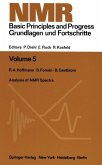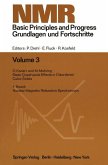"How does a photon get into an atom?" This question puzzled not only leading scientists, e.g. Schrödinger and Heisenberg. It is still asked by students. And it is, indeed, a key question of quantum mechanics.
James D. Macomber's book was the first to provide a didactic and unified approach to the answer. It has been updated with recent experimental results and modern theoretical interpretations, including quantum correlation effects in condensed matter, four-wave mixing and synchrotron radiation . The book has been written for final year undergraduate students in Chemistry and Physics. It provides an understanding for similarities among the spectroscopic methods, and is stimulating to read.
James D. Macomber's book was the first to provide a didactic and unified approach to the answer. It has been updated with recent experimental results and modern theoretical interpretations, including quantum correlation effects in condensed matter, four-wave mixing and synchrotron radiation . The book has been written for final year undergraduate students in Chemistry and Physics. It provides an understanding for similarities among the spectroscopic methods, and is stimulating to read.








